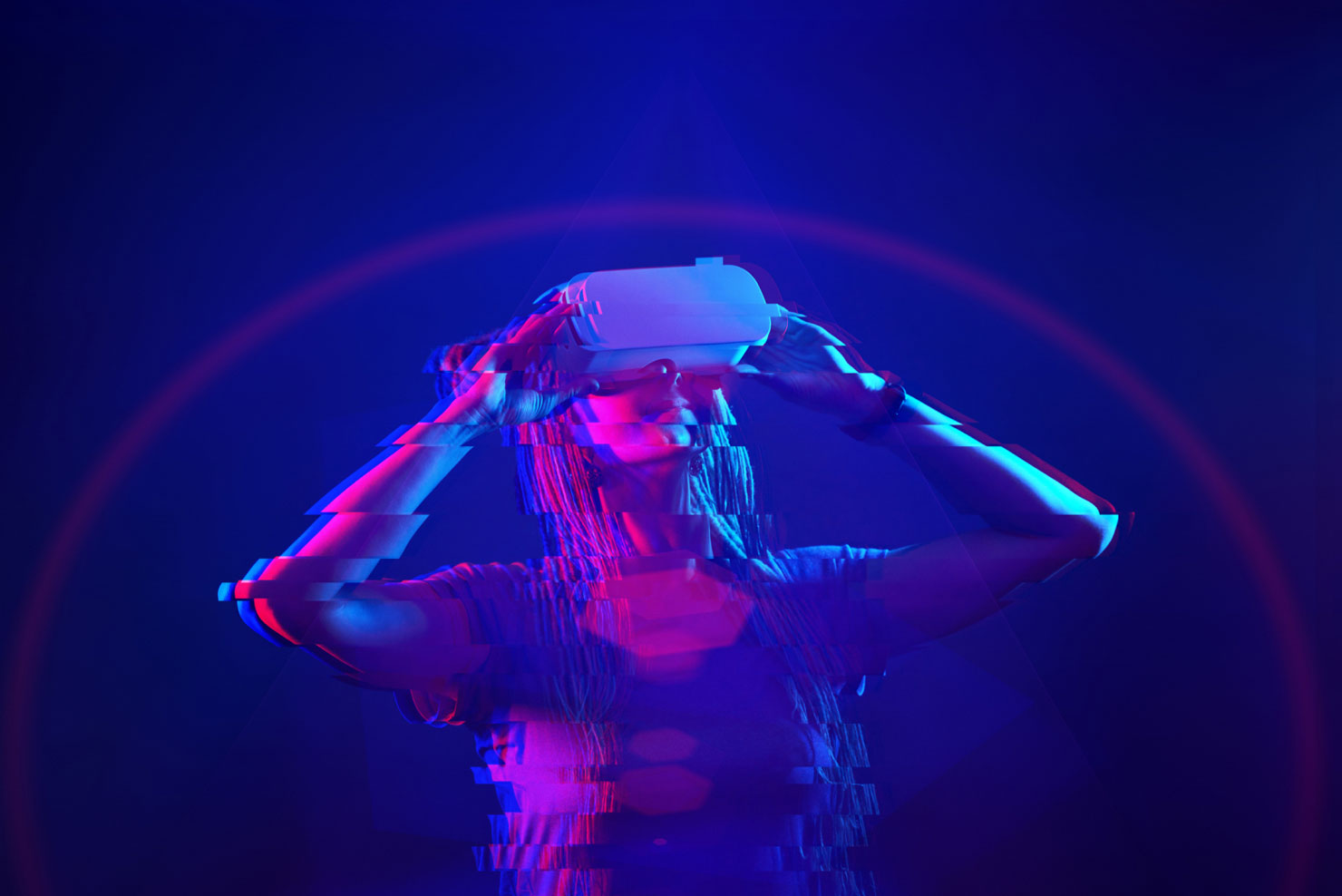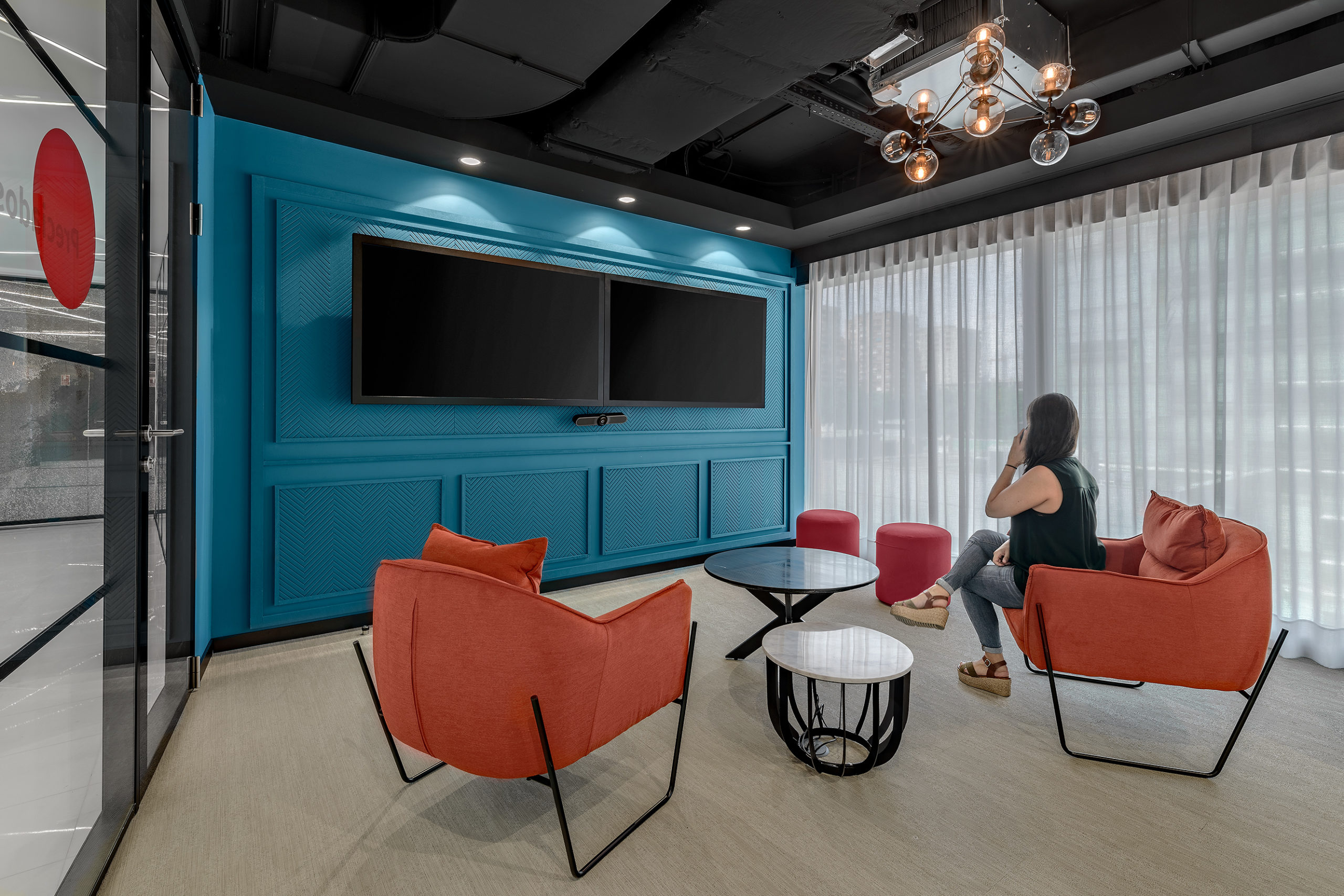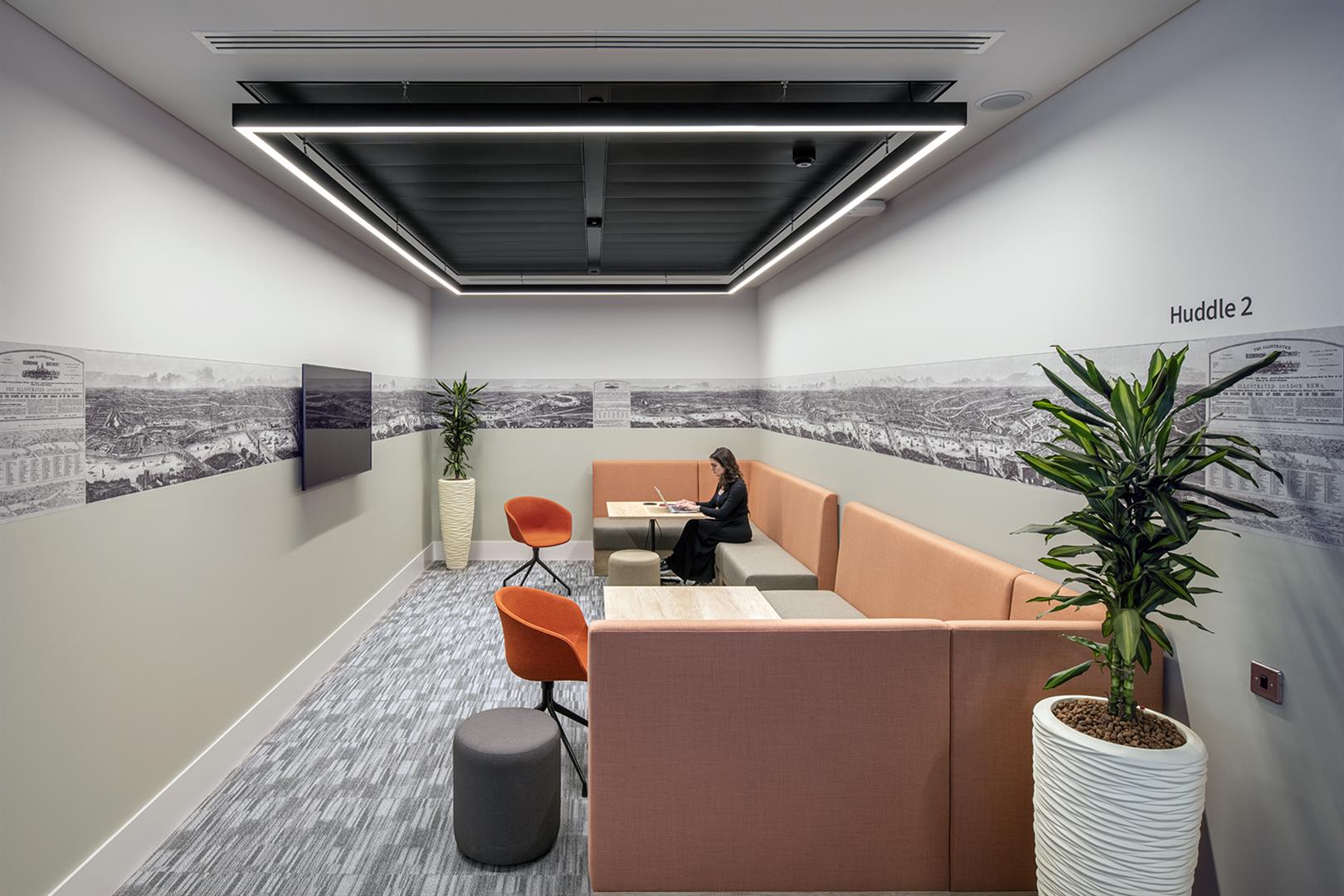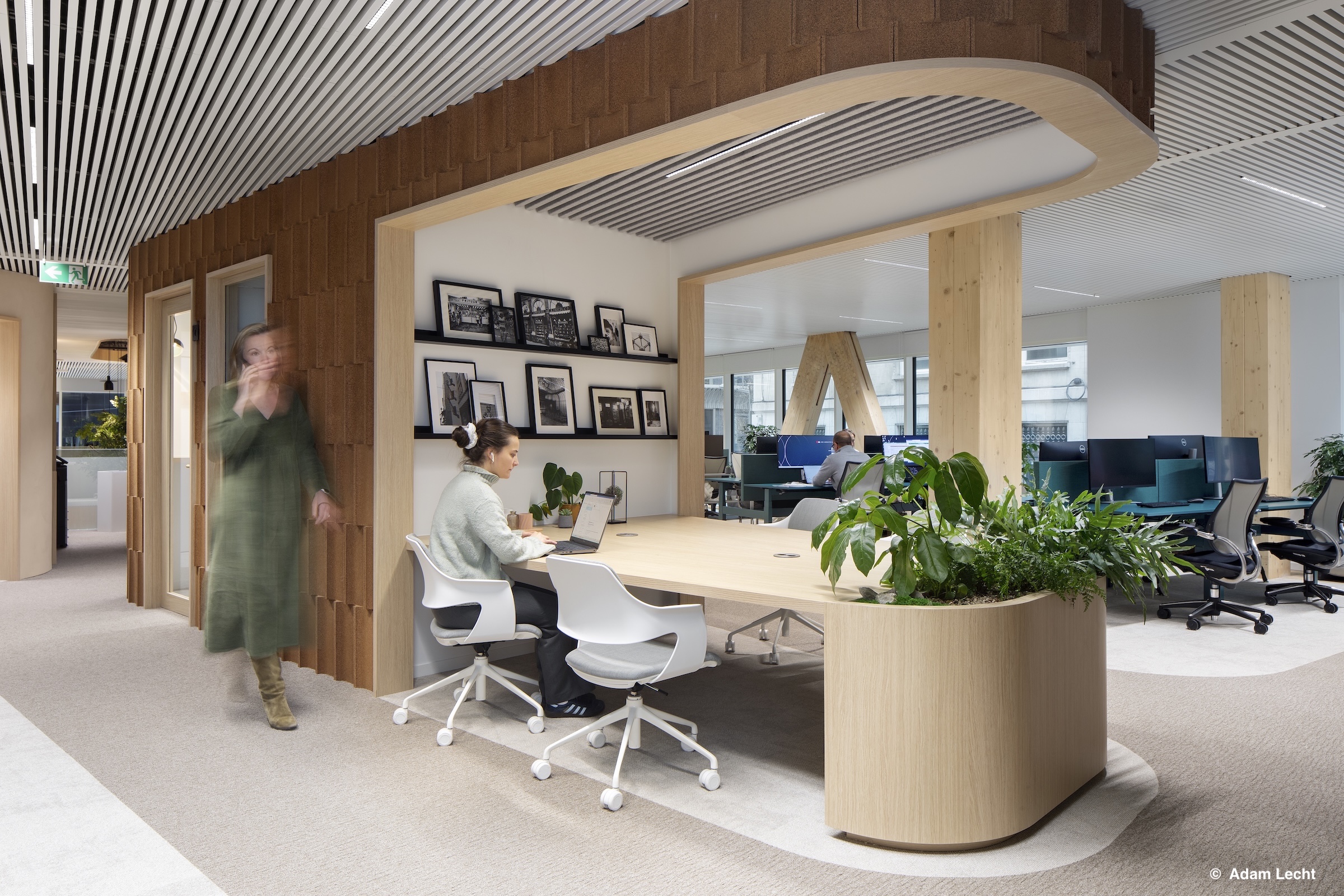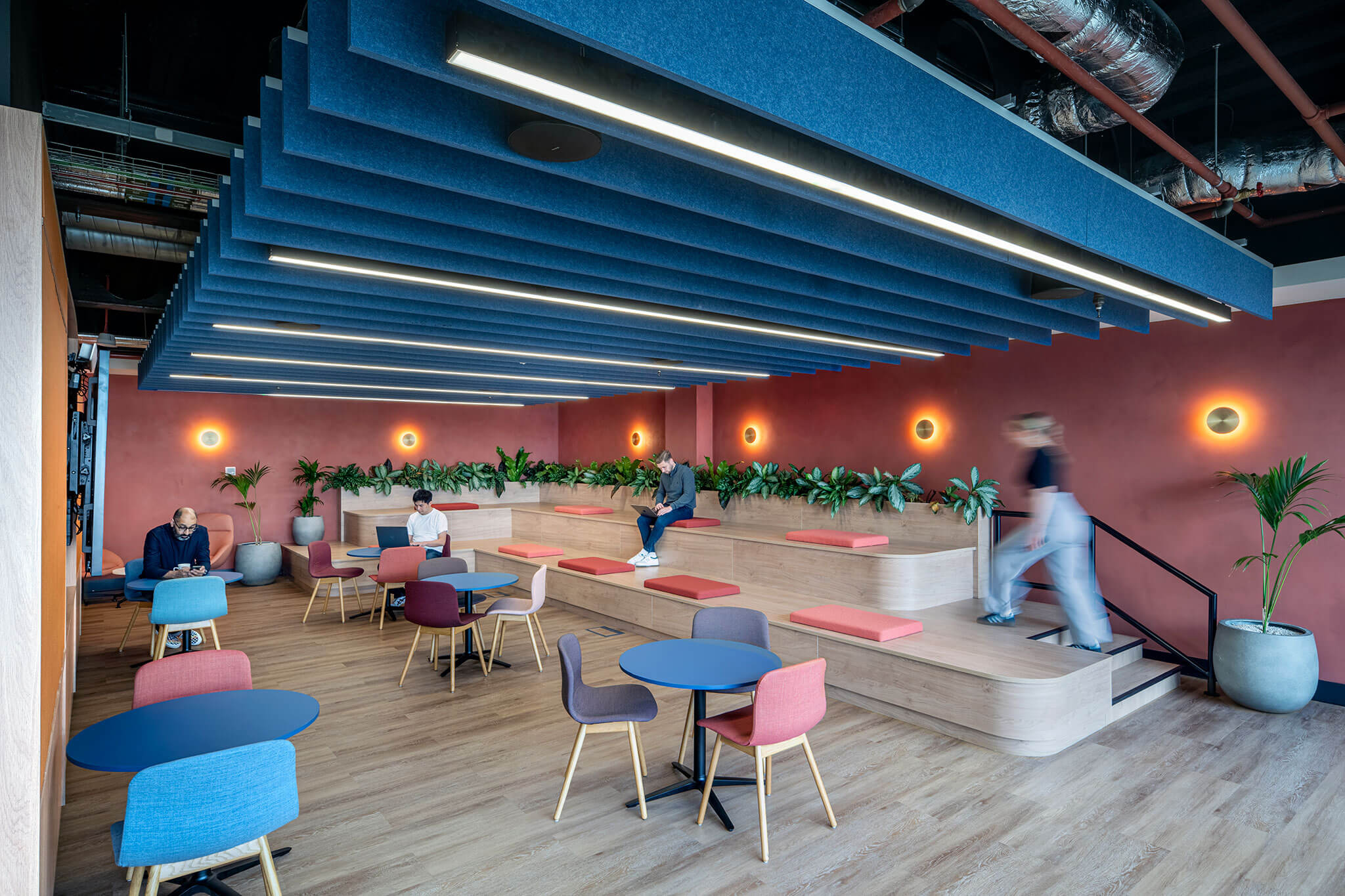It was once the stuff of science fiction but as technologies in augmented reality and virtual reality become commonplace, the online virtual worlds known collectively as the metaverse are entering the orbits of people in everyday life.
So what does the metaverse mean for businesses and how we work?
Limitless virtual spaces
Well-designed metaverse space can provide new ways for hybrid workforces to collaborate and build company culture. Teams can come together to not only work but socialise virtually in spaces that can feel a world away from the everyday office.
And as virtual space isn’t bound by the laws of physics governing bricks-and-mortar rooms, designers can find new inspiration in their creation of these metaverse workspaces.
“In a virtual space, we have total creative freedom,” says Amaury Watine, Creative Director for Tétris EMEA. “Without technical, financial, structural or gravitational constraints, there are no creative limits. The huge opportunity is to think out of the box and to start from scratch in terms of what virtual office space can offer people.”
Virtual classrooms could supercharge online training by providing a more immersive environment for learning and connecting with fellow trainees. A metaverse break room might offer an endless variety of virtual games from table football to team trivia – far more than could be hosted in any real-world office building.
Metaverse technologies also offer an important opportunity to recreate real-world spaces in the virtual world. Such spaces are already being used to simulate high-risk situations for training in the military and medical professions – and other industries can benefit from offering virtual, experiential environments for people to research or experiment in their work.
Improving business communication
As businesses shift towards hybrid work models where teams may often meet over video call, the metaverse could answer the need for more immersive virtual meeting spaces.
Avatars, or digital representations of people in virtual worlds, could be projected from wearable technology such as headsets, haptic gloves and even sensory suits that could impart more nuance about users’ body language.
“Currently, we use video calling to meet each other across the world and we only see each other’s faces – but the metaverse could bring us all together as avatars and, considering 70% of our communication is through body language, it could be greatly beneficial in terms of understanding and getting to know one another better,” says Jonathan Hillery, Head of Technical Design at Tétris South Africa.
Down the line, people could join meetings as holograms based on data from AI-powered motion sensors and cameras, adding even more verisimilitude to the virtual get-together.
Mixed-reality workplaces
Many companies are investigating the possibility of integrating metaverse space within their real-world workspaces to create hybrid meeting space that supports in-person and metaverse communications.
“In such a mixed reality, a virtual reality helmet can create a lot of isolation,” notes Watine. “To meet client requests for this kind of space, we would develop the augmented reality tech features so there can be seamless communication between people on the spot, others in a team video and still others as holograms. During these meetings it will be possible to work on documents, modify plans and interact on online presentations, in 3D or in holograms.”
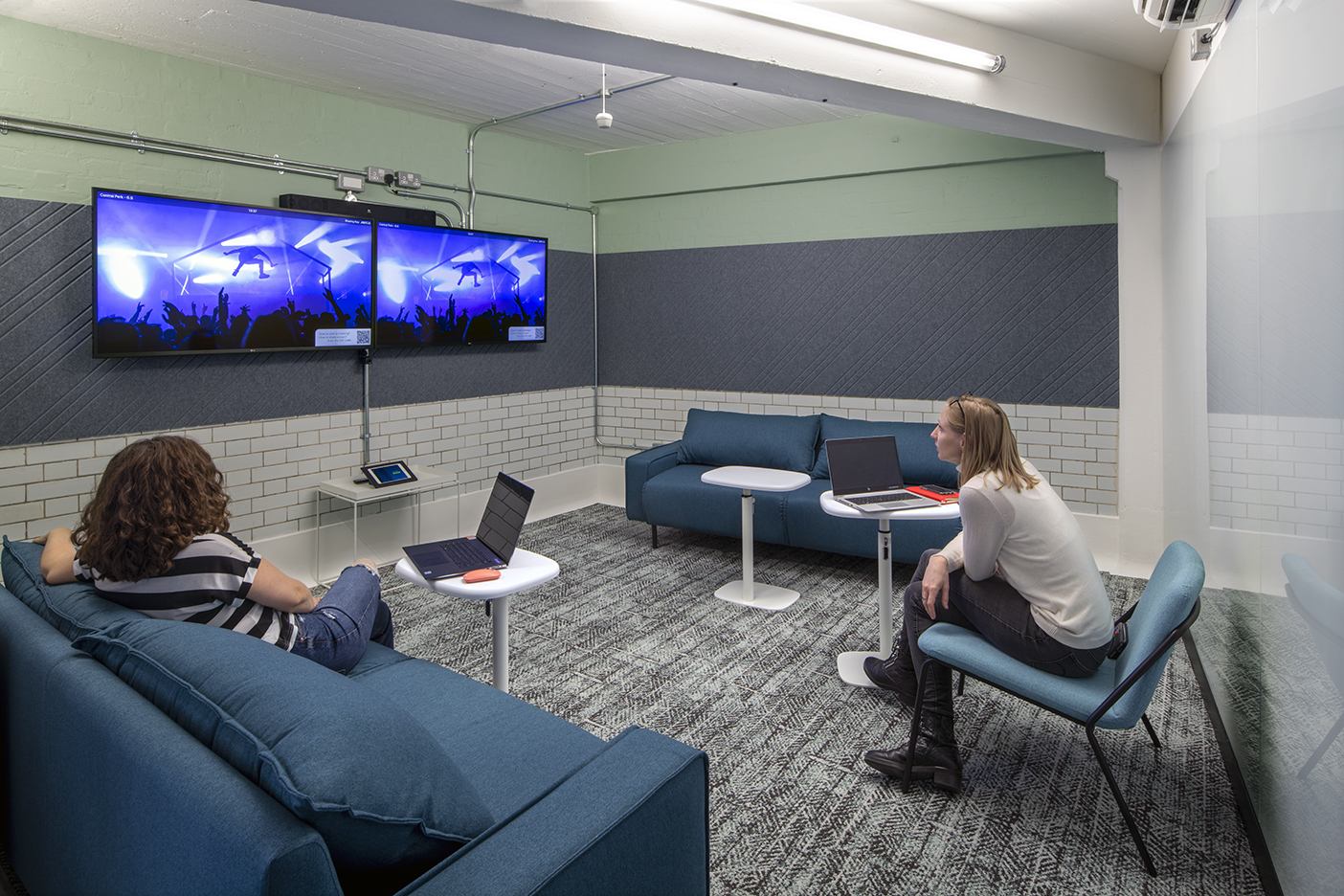
To make the experience more immersive for colleagues meeting in the metaverse, Watine adds, technologies could impart sensations such as temperature, smell and other factors that make everyday reality so convincing. Structural considerations in the real world can also help boost the authenticity of the virtual world – soundproofed pods and rooms, for example, help create a more immersive virtual experience.
The retail sector could especially benefit from metaverse spaces, especially as most people are used to online shopping, so the idea of shopping in the metaverse isn’t too much of a stretch. Metaverse shops would be able to offer a truly immersive “try before you buy” experience that people can access from the comfort of home.
“Big retailers will certainly always have flagship bricks-and-mortar stores, but the metaverse offers opportunities to open online stores with no stock, more flexibility and infinite possibilities. This may lead to emotionally highly appealing experiences for the customer” says Watine.
Metaverse twins for asset management
Beyond new and stimulating user experiences, the metaverse also offers opportunities to improve how space is managed.
For example, many corporate buildings are already managed via digital twin technology. Using metaverse twins could be an even bigger boon to facilities management. Metaverse designers would replicate a building in the virtual world while building sensors would relay real-time information about the physical space, helping flag and predict issues that can be quickly acted on.
“There are some serious opportunities for asset management,” says Watine. “When the building is represented very precisely in the metaverse, it allows rapid intervention on the technical elements.”
A metaverse version of a building can also be used to create a marketing suite that’s easily visited by potential investors anywhere in the world, adding flexibility to the sales process while improving sustainability by negating the need for travel. Such metaverse twins also save the work – and carbon emissions – of preparing and dismantling a show home space.
Isolation in the metaverse
Despite the potential benefits of the metaverse for connecting people, a virtual world could also end up isolating users from real-world communities.
The pandemic brought into high relief the impact that loneliness can have on health and wellbeing – research suggests that chronic loneliness can be as harmful as smoking 15 cigarettes a day. If the metaverse becomes normalised in daily life, it will be critical to maintain balance between the real world and the virtual one.
“One of the main threats is the loss of real social relationships, so we have to make sure to create worlds on the metaverse that allow us to interact, collaborate, talk or have fun together,” says Watine.
Older generations could also initially feel excluded from metaverse communities, with interest highest among Gen Z and millennials. However, as more businesses leverage the metaverse, that’s likely to change. “Fundamentally, the metaverse is a means to reach Gen Z – however, I believe that every generation will eventually be included once they understand the jump to the 2.0 economy,” says Javier Furones, CEO of Voicehumans, a company that creates workforce AI with digital humans for consumer experience and Metaverse strategies.
Businesses can support their employees and their customers by designing inclusive, secure metaverse spaces that welcome and educate people, while highlighting safe metaverse practices.
Metaverse as a business edge
Incorporating the metaverse into real-world office space could become a strong competitive edge for businesses.
By offering more varied, virtual space for working and relaxing as well as customer interaction, metaverse office space can differentiate a company to potential employees and clients. And as people shift towards increasingly digital ways of working, a virtual, immersive space for collaboration could become indispensable.
“The metaverse in the office is becoming very real,” says Watine. “It can provide an immersive experience, simplify communication and improve collaboration, and through technology, enable seamless virtual, in-person or mixed-reality experiences that ultimately will be a major enhancer to employee wellbeing in the future world of work – and a real benefit to attracting and retaining great talent.”
Although the metaverse is in its infancy, it’s clear that it will one day become a part of all our lives. There is heavy development and investment going into the metaverse, opening a world of possibilities. Yet even as we shift towards exciting new virtual ways to interact, real-world spaces designed to encourage face-to-face connection are more vital than ever –whether we connect in person or in the metaverse.

Let’s talk about incorporating the metaverse into your real-world office space
